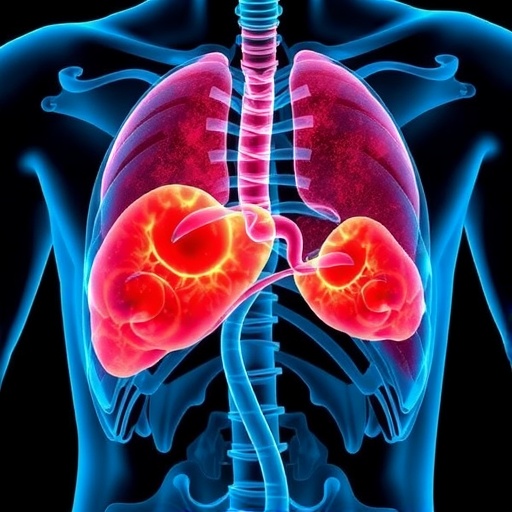Scientists have found that carrying fat around your middle could be as good an indicator of cancer risk as body mass index (BMI), according to research* published in the British Journal of Cancer today (Wednesday).
It shows that adding about 11cm to the waistline increased the risk of obesity related cancers** by 13 per cent.
For bowel cancer, adding around 8 cm to the hips is linked to an increased risk of 15 per cent. ***
Carrying excess body fat can change the levels of sex hormones, such as oestrogen and testosterone, can cause levels of insulin to rise, and lead to inflammation, all of which are factors that have been associated with increased cancer risk.
This is the first study comparing adult body measurements in such a standardised way for obesity-related cancers.
Using a novel approach, scientists at the International Agency for Research on Cancer (IARC-WHO) showed that three different measurements of body size, BMI****, waist circumference, and waist to hip ratio all predicted similar obesity-related cancer risk in older adults.
The study combined data from around 43,000 participants who had been followed for an average of 12 years and more than 1,600 people were diagnosed with an obesity-related cancer.
Dr Heinz Freisling, lead study author and scientist at the International Agency for Research on Cancer (IARC-WHO), said: "Our findings show that both BMI and where body fat is carried on the body can be good indicators of obesity-related cancer risk. Specifically, fat carried around the waist may be important for certain cancers, but requires further investigation."
"To better reflect the underlying biology at play, we think it's important to study more than just BMI when looking at cancer risk. And our research adds further understanding to how people's body shape could increase their risk."
Being overweight or obese is the single biggest preventable cause of cancer after smoking and is linked to 13 types of cancer including bowel, breast, and pancreatic.
Dr Julie Sharp, Cancer Research UK's head of health information, said: "This study further highlights that however you measure it being overweight or obese can increase the risk of developing certain cancers, including breast and bowel.
"It's important that people are informed about ways to reduce their risk of cancer. And while there are no guarantees against the disease, keeping a healthy weight can help you stack the odds in your favour and has lots of other benefits too. Making small changes in eating, drinking and keeping physically active that you can stick with in the long term can help you get to a healthy weight – and stay there."
###
For media enquiries contact Kathryn Ingham in the British Journal of Cancer press office on 020 3469 5475 or, out of hours, on 07050 264 059.
Notes to editor:
* Freisling et al. Comparison of general obesity and measures of body fat distribution in older adults in relation to cancer risk: meta-analysis of individual participant data of seven prospective cohorts in Europe. British Journal of Cancer. Paper: https://www.nature.com/bjc/journal/vaop/ncurrent/full/bjc2017106a.html
** This included people diagnosed with: postmenopausal female breast, colorectal, lower oesophagus, upper stomach, liver, gallbladder, pancreatic, womb, ovary, and kidney.
*** The study presents obesity-related cancer risk as the change in risk per standardised unit (standard deviation) in BMI or waist circumference, which allows direct comparisons between these obesity-related cancer risk estimates. Cancer Research UK have used the population estimates of actual BMI and waist circumference presented in the paper to approximate how these changes in obesity-related cancer risk translate to actual BMI and waist circumference.
**** Body mass index is calculated with the weight and height of an individual and expressed in units of kg/m2. Healthy weight: 18.5 to 24.9, overweight: 25 to 29.9, obese: over 30.
About the British Journal of Cancer (BJC)
The BJC is owned by Cancer Research UK. Its mission is to encourage communication of the very best cancer research from laboratories and clinics in all countries. Broad coverage, its editorial independence and consistent high standards have made BJC one of the world's premier general cancer journals. http://www.bjcancer.com
Media Contact
Kathryn Ingham
[email protected]
020-346-95475
@CR_UK
http://www.cancerresearchuk.org
############
Story Source: Materials provided by Scienmag




